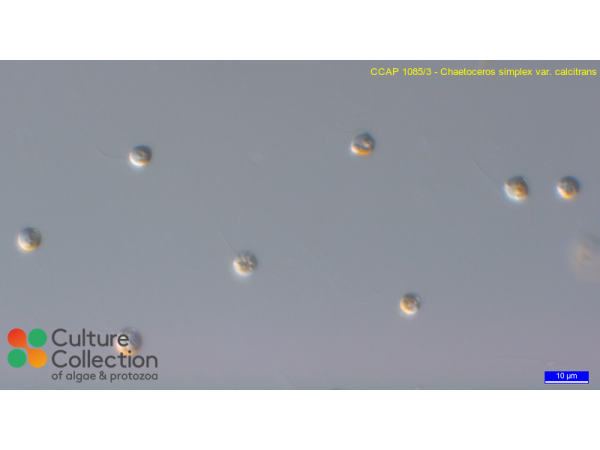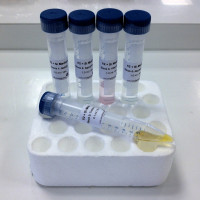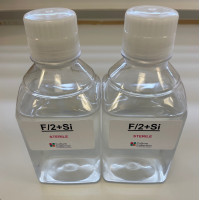Note: for strains where we have DNA barcodes we can be reasonably confident of identity, however for those not yet sequenced we rely on morphology
and the original identification, usually made by the depositor. Although CCAP makes every effort to ensure the correct taxonomic identity of strains, we cannot guarantee
that a strain is correctly identified at the species, genus or class levels. On this basis users are responsible for confirming the identity of the strain(s) they receive
from us on arrival before starting experiments.
For strain taxonomy we generally use AlgaeBase for algae and
Adl et al. (2019) for protists.
| Attributes | |
| Authority | (Paulsen) Takano 1968 |
| Isolator | unknown (pre 1988) |
| Notes | identified by Mann 1999; originally received mistakenly as Thalassiosira pseudonana strain 3H in 1988 from Knapdale Sea Farms, Argyll, who acquired it from Fisheries Experimental Station, Conwy, who acquired from Delaware, USA, likely mix up at some point; renamed Dec2020 after sequencing and as per AlgaeBase. |
| Axenicity Status | Bacteria and other organisms present |
| Country | unknown |
| Environment | Marine |
| GMO | No |
| Group | Diatom |
| In Scope of Nagoya Protocol | No |
| ABS Note | Collected pre Nagoya Protocol. No known Nagoya Protocol restrictions for this strain. |
| Collection Date | pre 1988 |
| Pathogen | Not pathogenic: Hazard Class 1 |
| Strain Maintenance Sheet | SM_MarineDiatoms15_20.pdf |
| Toxin Producer | Not Toxic / No Data |
| Type Culture | No |
| Taxonomy WoRMS ID | 163013 |
| Synonyms | Chaetoceros simplex var. calcitrans |
| Formerly Listed in CCAP as | Thalassiosira pseudonana (Hustedt) Hasle & Heimdal 1970,Chaetoceros simplex var. calcitrans |
CCAP 1085/3
Chaetoceros calcitrans
- Product Code: CCAP 1085/3
- Availability: See Availability/Lead Times
Related Products
CCAP MAF2S-C
f/2+Si Medium
CONCENTRATED STOCKS
Non-sterile concentrated stocks to make up 5 litres of f/2+Si medium. f/2+Si medium is used for cul
CCAP MAF2S-P
f/2+Si Medium
1 LITRE PREMADE
1 litre of sterile, ready to use, f/2+Si medium. f/2+Si medium is used for culturing marine diatoms



